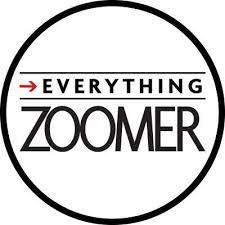
By Carol Ann Pruitt
Before we know it, Generation Z, or the “Zoomers,” will surpass the Boomers in becoming the most significant workforce population in the U.S. While Boomers currently make up 22% of the U.S. population, the Zoomers are approaching 30%!
Zoomers are the youngest generation, currently ranging from 9 to 26 years old, and those entering our workforce are very different from their predecessors, the Millennials, Gen X’ers, Boomers, or Matures. So, how employers attract, engage, and retain the Zoomers will need to be very different.
You are thinking, “What?” do I have to change the way I do business AGAIN? The answer is YES if you want to hire and keep these young and very talented individuals. This workforce generation is very loyal, serious about their careers, and hard-working IF they like the company they are working for.
So, “What’s important to these Zoomers?” you ask. In addition to their interest in the environment, giving back to society, and politics, the Gen Z workforce looks for workplace equality (excellent and fair pay, opportunities, and development), corporate social responsibility (ethics, diversity, recycling, safety, health) and flexible work arrangements. That’s a lot!
You’ve heard about companies’ Health and Wellness programs for years, which usually involve a one-size-fits-all approach to maintaining physical and mental health. Traditional Wellness programs may include onsite fitness centers, health screenings, smoking cessation, wellness challenges, massages, and yoga classes. However, as we mentioned earlier, there are five generations in today’s workforce. Therefore, companies need to constantly evolve to meet the needs of their employees of all generations. Leading companies are now turning to “Well-Being” initiatives to do this. Well-Being means much more than physical and mental health or even “Wellness.” It’s about taking a holistic view and understanding how employees manage the different aspects of their lives: According to Gallup Workplace, there are five elements of well-being that impact business performance: 1) career well-being – how they occupy time or like what they do every day (most significant impact), 2) social well-being – how they manage their relationships, 3) financial well-being – how they effectively manage their economic life, 4) physical well-being – how they maintain good health and have enough energy to get things done on a daily basis, and 5) community well-being – their sense of engagement with the area where they live.
For some companies, “Well-Being,” like “Wellness,” has been chiefly a generic program with various health options managed by the human resources department to control healthcare costs. However, Forbes says, “Actual well-being is not a program, it is not a topic, but rather a mindset, or most successfully, a cultural orientation within the workplace. It is a commitment to creating a healthier, happier, and more productive workforce and community.”
Josh Bersin, a leading industry researcher in talent management, writes, “Starting as potential hires and recruits, employees look at everything that happens at work as an integrated experience that impacts daily life in and outside the workplace….”
In this time of the “turnover tsunami,” as SHRM calls it, organization leaders need to focus on creating the conditions for employees to thrive professionally AND personally. According to a Gallup poll, ALL workplace generations rank “my organization cares about Well-Being” in their top three criteria. And the Zoomers (and even the Millennials in this poll) rank it number one!
References:
WebMD Health Services, Christine Muldoon (June 1, 2021) Wellness vs. Well-Being: What’s the Difference? /www.webmdhealthservices.com/blog/wellness-vs-well-being-whats-the-difference
Forbes, Colleen Reilly (June 9, 2020) Well-Being Positively Impacts Firm Performance
Gallup, Iseult Morgan (August 31, 2021) Employees Want Well-Being From Their Job, and They’ll Leave to Find It
SHRM.org
